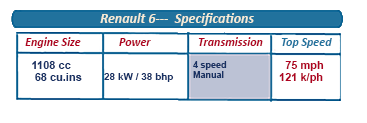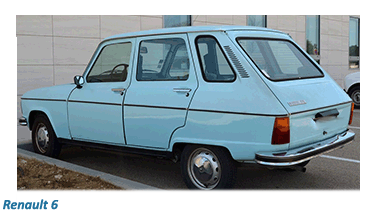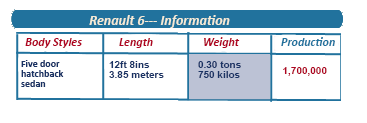
In October 1968 Renault, always looking over their shoulder at Citroen, launched the 6, at the Paris Show, apparently in response to their long-term rival’s latest offering the Dyane.

 Citroen really caught Renault on the hop with Dyane, launched a year earlier and flagrantly flaunted as the 2 CV for the Seventies, even though they continued to produce both models for several years.
Citroen really caught Renault on the hop with Dyane, launched a year earlier and flagrantly flaunted as the 2 CV for the Seventies, even though they continued to produce both models for several years.
Renault’s response was not that long in coming with 6, which was marketed as their replacement for the 4, even though its little sister was still selling like hotcakes.
It soon emerged that both the Dyane and the Six were simply revamped versions of their stablemates, with a more modern design and more opulently equipped interior.
![]()
As they had done with the 4, Renault made the mistake of launching the 6 with a small and slightly underpowered engine as standard, this time the 845cc used on the Dauphine.
This inherent lack of power once again causing some conservation among potential buyers.
 However, they rapidly put the smile back on the face of those who hankered after a little more power by offering the option of a 1100cc engine, as fitted on the Renault 4.
However, they rapidly put the smile back on the face of those who hankered after a little more power by offering the option of a 1100cc engine, as fitted on the Renault 4.
The Four had been in production for six years when Renault launched the Six, which was very similar, at least in profile.
 Previous experience with the 4CV and the Dauphine and awareness of the fickle buying habits of the French public may well have led them to assume that demand for the Renault Four was about to taper off, and they would be left with a significant gap in their product range.
Previous experience with the 4CV and the Dauphine and awareness of the fickle buying habits of the French public may well have led them to assume that demand for the Renault Four was about to taper off, and they would be left with a significant gap in their product range.
In the end, it transpired that the development team at Renault could not have been more wrong, with the four remaining in production for six years after the Six was discontinued.
Not only that but overall sales for the Four outpaced the Six by more than four to one!






